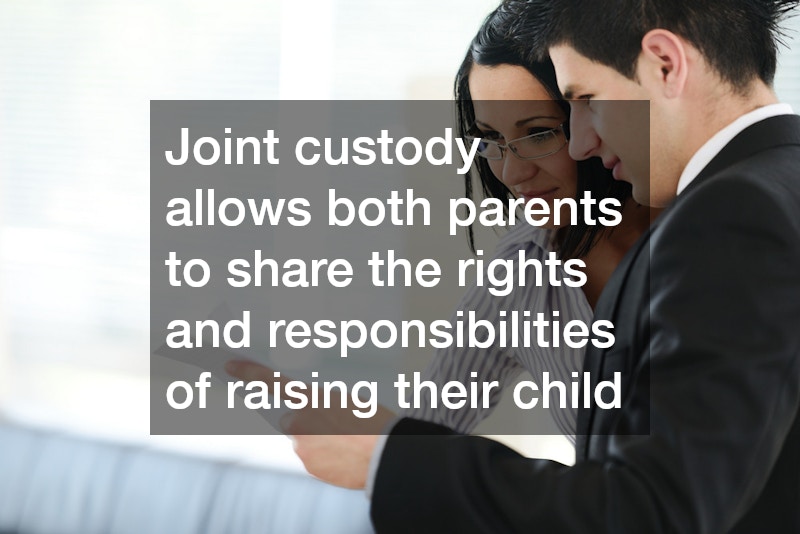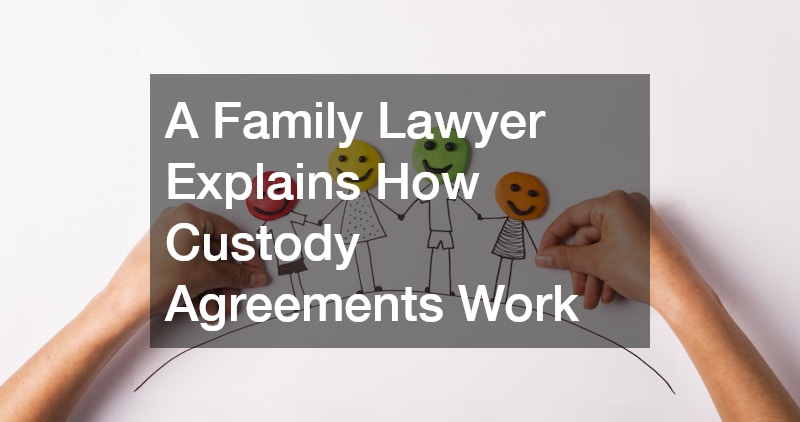Navigating the complexities of custody arrangements can be overwhelming, particularly for parents facing separation or divorce. Understanding the legal frameworks and criteria that influence custody decisions is essential for ensuring the well-being of children and equitable treatment of parents. An experienced family lawyer can help.
Custody agreements require careful consideration and understanding, as they play a crucial role in defining the relationship between parents and their children. Most often, parents have genuine intentions of prioritizing the best interests of their children; however, emotions can complicate decisions.
This article aims to demystify the process and encourage parents to approach custody matters with informed perspectives.
From initial considerations to litigation, each step in the custody process can affect the future dynamics of a family. This article will serve as a comprehensive guide for parents wrestling with custody arrangements, highlighting vital information that can assist them in making informed choices. By familiarizing themselves with how custody agreements work, parents will be better positioned to make decisions that benefit their children and uphold their rights.
What Factors Are Considered in Custody Agreements?
Courts primarily assess the child’s well-being as the paramount criterion in custody determinations. Additionally, the stability of parental environments alongside emotional support is equally scrutinized in custody hearings.
Another crucial aspect involves evaluating each parent’s capacity to provide a nurturing environment. This entails assessing the overall lifestyle of the parent, their relationship with the child, and their ability to ensure the child’s physical safety and emotional growth. The court often looks for a nurturing approach that responds to a child’s specific needs, including educational and social aspects.
Moreover, the child’s relationship with each parent is heavily regarded in making custody decisions. Courts want to preserve the child’s attachment to both parents unless there are substantial reasons to restrict contact. Any history of domestic violence or substance abuse will also factor significantly, as the court seeks to prioritize the child’s safety above all.
How Is Joint Custody Different from Sole Custody?
Joint custody allows both parents to share the rights and responsibilities of raising their child, promoting involvement from both sides, which can be beneficial for the child’s stability. This arrangement encourages collaboration between parents but requires effective communication and cooperation for it to function well.
Sole custody, on the other hand, grants one parent the exclusive right to make major decisions for the child, often resulting from a determination that one parent may be unfit or incapable of sharing responsibilities. This structure can simplify decision-making but may limit the non-custodial parent’s involvement and can lead to significant emotional distress for both the parent and the child.
In practical terms, joint custody arrangements often translate to shared parenting time, whereas sole custody typically results in less visitation for the non-custodial parent. Understanding the nuanced implications of these arrangements is crucial for parents as they navigate custody agreements and strive to maintain relationships with their children while adhering to legal expectations.
What Is the Process for Establishing a Custody Agreement?
To begin the custody process, many courts encourage mediation as a means to facilitate discussion between parents and reach a mutually agreeable solution. Mediation can often lead to more amicable outcomes and preserve parental relationships, ultimately benefiting the child.
If mediation does not result in an agreement, the next phase typically involves a court hearing, where each parent presents their case before a judge. The judge will consider evidence and arguments related to the child’s best interests, assessing the merits of each parent’s situation. Having a clear presentation and understanding of relevant legal precedents is vital at this stage.
Once a decision is reached, either through mediation or a court ruling, a formal custody agreement will be drafted and must be approved by the court. This document will outline the terms of the custody arrangement, including visitation schedules and decision-making responsibilities. Finalizing the agreement is immensely important, ensuring all parties are legally bound to adhere to its provisions moving forward.
Can Custody Agreements Be Modified?
Having a custody agreement in place does not mean that it is set in stone; life is inherently dynamic, and circumstances will evolve. Understanding when and how modifications can be requested is essential for parents experiencing significant life changes.
Common instances that might prompt a modification include relocation of one parent, changes in employment, or even a significant change in the child’s life, such as health issues or educational needs. Courts recognize that the original agreement may no longer serve the child’s best interests in these cases and may allow for adjustments accordingly.
It is crucial for parents to note that modifications often require a substantial change in circumstances and typically must be documented with a court order. This prevents frivolous requests and ensures that changes are adequately justified. The aim is to promote stability and continuity in the child’s life, even amidst parental changes.
What Happens If a Parent Violates a Custody Agreement?
Violating a custody agreement can have serious implications, affecting not only the relationship between the parents but also the well-being of the child. Courts take noncompliance seriously, often leading to judicial intervention.
When a custody agreement is violated, the affected parent can seek legal recourse. They may file a motion with the court, outlining the violations and requesting enforcement of the custody terms. Depending on the severity of the breach, courts may impose sanctions or even modify custody arrangements. Punishments against the violating party may be imposed.
Additionally, it is advisable for parents to document all instances of violation with dates, details, and any communications regarding the incidents. This evidence will strengthen their case in court. Ultimately, adherence to custody arrangements is essential not just for legal reasons but for fostering the emotional security and stability that children require.
Understanding custody agreements is crucial for any parent involved in a custody dispute. By being informed about the various aspects of custody agreements, parents can better navigate the legal process and advocate for their children’s best interests. Recognizing the importance of mediation, cooperation, and effective communication can go a long way in developing positive outcomes for families.
It is essential for parents to approach custody agreements with an informed perspective – not only to protect their rights but also to support the emotional well-being of their children. Knowledge of how various factors influence custody decisions prepares parents to engage constructively in the process.
Custody arrangements can have long-lasting impacts, and understanding how to create, modify, and enforce them equips parents to navigate the legal landscape more effectively. Ultimately, prioritizing the child’s best interests and fostering a collaborative environment with each other can lead to healthier family dynamics moving forward.




